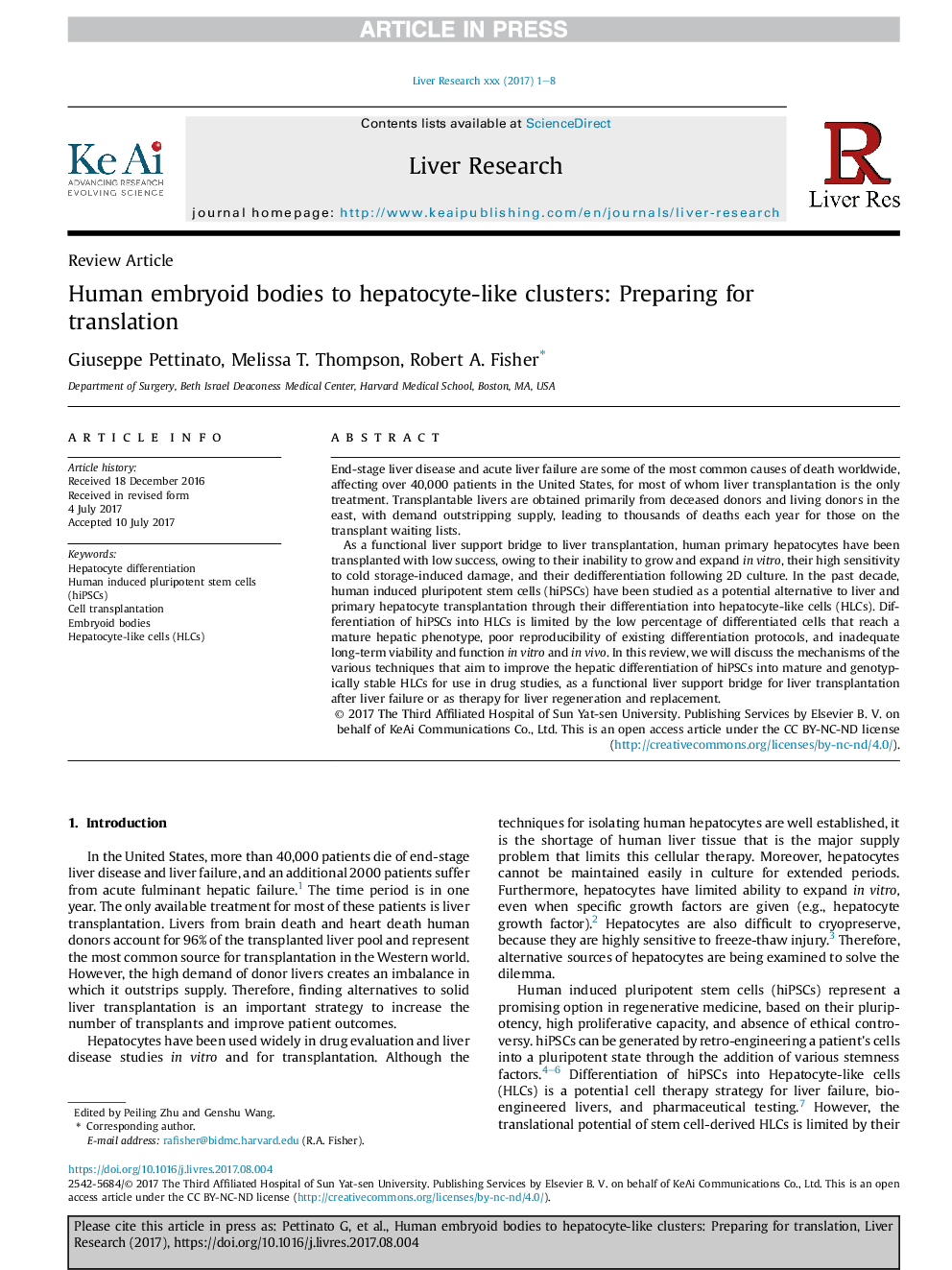| Article ID | Journal | Published Year | Pages | File Type |
|---|---|---|---|---|
| 8925935 | Liver Research | 2017 | 8 Pages |
Abstract
As a bridge to liver transplantation, human primary hepatocytes have been transplanted with low success, owing to their inability to grow and expand in vitro, their high sensitivity to cold storage-induced damage, and their dedifferentiation following two-dimensional culture. In the past decade, human induced pluripotent stem cells (hiPSCs) have been studied as a potential alternative to liver and primary hepatocyte transplantation through their differentiation into hepatocyte-like cells (HLCs). Differentiation of hiPSCs into HLCs is limited by the low percentage of differentiated cells that reach a mature hepatic phenotype, poor reproducibility of existing differentiation protocols, and inadequate long-term viability and function in vitro and in vivo. In this review, we will discuss the mechanisms of the various techniques that aim to improve the hepatic differentiation of hiPSCs into mature and genotypically stable HLCs for use in drug studies, as a potential bridge for liver transplantation after liver failure or as therapy for liver regeneration and replacement.
Keywords
Related Topics
Health Sciences
Medicine and Dentistry
Hepatology
Authors
Giuseppe Pettinato, Melissa T. Thompson, Robert A. Fisher,
